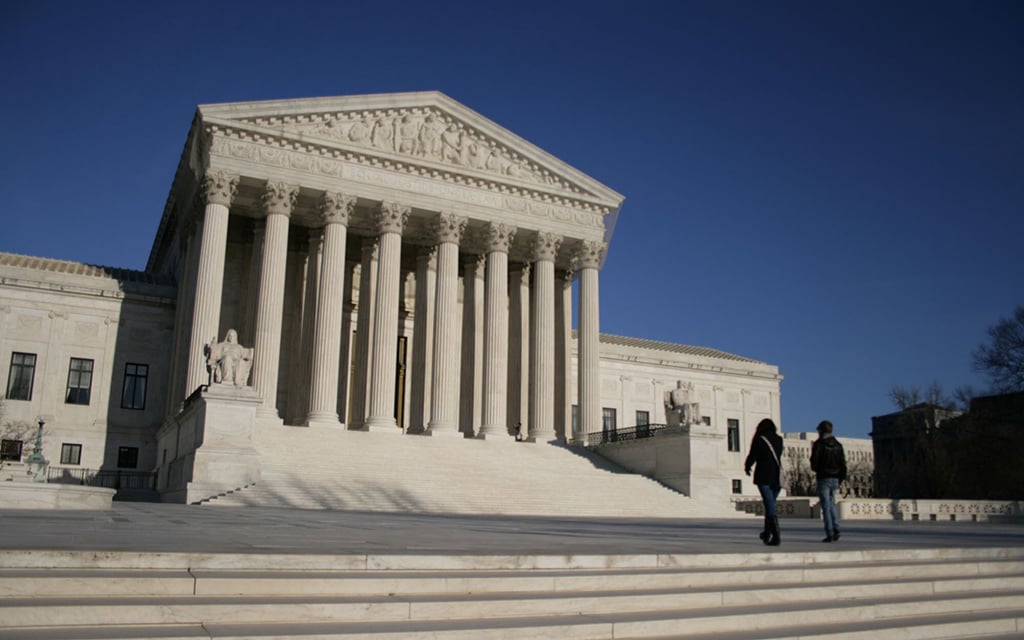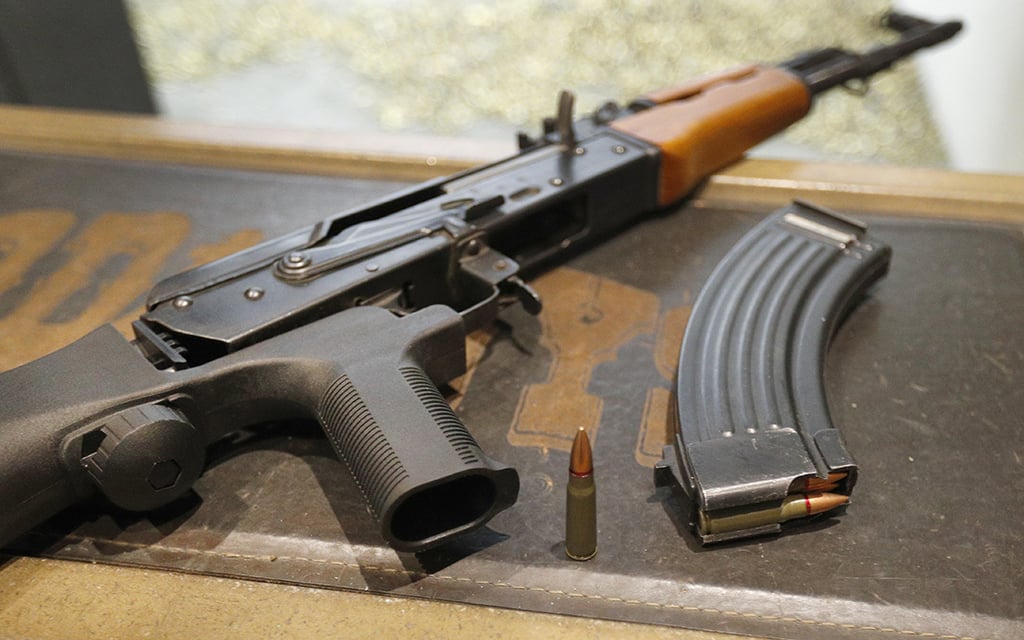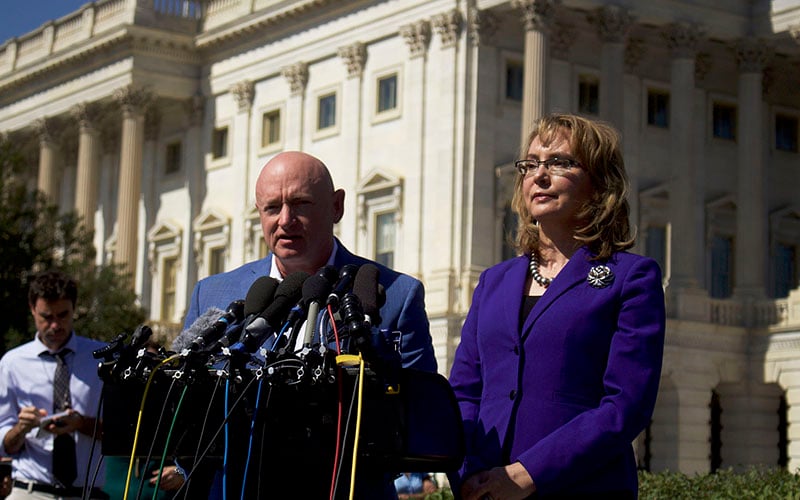WASHINGTON – Bump stocks are back thanks to the U.S. Supreme Court. Some survivors of the Las Vegas massacre that left 60 people dead aren’t pleased.
That includes Justin Uhart, a gun owner who was working as a bartender at a music festival in 2017 when a man named Stephen Paddock fired over 1,100 rounds during a 10-minute shooting spree – a rampage made possible by use of a device that converts an ordinary rifle into a rapid-fire weapon.
“I support the ban on bump stocks because we don’t need it,” Uhart, a graduate of Arizona State University, said after the Supreme Court overturned the Donald Trump-era ban on a 6-3 vote.
The majority found that bump stocks cannot be considered a machine gun, and that the Trump-era Justice Department had exceeded its authority when it banned the devices.
“A bump stock does not convert a semiautomatic rifle into a machine gun any more than a shooter with a lightning-fast trigger finger does,” Justice Clarence Thomas wrote in the majority opinion.
Among those killed in Las Vegas were Brett Schwanbeck of Bullhead City, University of Arizona graduate Christiana Duarte, and an ASU graduate from Washington state, Carrie Parsons.
The killer opened fire from a window of the Mandalay Bay Resort and Casino during the Route 91 Harvest music festival on Oct.1, 2017. Police found 47 guns, 12 of which were equipped with bump stocks, in Paddock’s hotel and homes.
The shooting left hundreds wounded and shocked the nation. It was the deadliest mass shooting in the United States in modern history.
A former bartender at El Hefe and Maya Day Club in Scottsdale, Uhart, now 32 and a resident of Fernley, Nevada, was working as a bar manager at the festival.
At first, he thought the gunfire was firecrackers, but it didn’t stop.
“I didn’t understand what was going on,” he said. “I thought it was a terrorist attack.”
He ran toward the stage and saw a girl convulsing. She later died.
“I yelled at people, ‘Just get out. Get the f— out,’ ” he recalled.
Nearby, concertgoers were running, but some of them ended up in a cluster that apparently drew the shooter’s notice. As more bullets fell, Uhart found a hiding spot in the lighting control area near the stage.
Around him, concertgoers were screaming.
A 21-year-old working as a security guard was shot a few feet away.
“I can still see his face. … He didn’t get down fast enough. He got hit in the back a couple times and in the head,” Uhart said. “He landed right on my feet and died.”
A girl hiding nearby saw what happened and “screamed bloody murder, the worst scream you’d ever hear in your life.” Uhart covered her eyes to shield her from the horrors.
During a pause in the shooting – Paddock was apparently reloading – Uhart and maybe five to eight others made a run for safety. The shooting resumed in their direction. One bullet got alarmingly close to his head, throwing him off balance, he recounted.
Uhart fell into the concrete. When he stood up, now with significant scrapes all over his face, he saw Jan Lambourne, a stranger at the time, bleeding, crawling on the ground to escape.
Uhart plugged her gushing bullet wound. Amid the chaos, he flagged down a sheriff’s deputy. Together they carried Lambourne to safety.
Once out of the line of fire, Uhart removed his T-shirt and used it to stanch the bleeding until an emergency worker took over. He stayed with Lambourne, talking with her about her cats to keep her distracted and alert, fearing she would go into shock.
“Still to this day, she says that saved her,” he said.
He’s since made an appearance on “Deal or No Deal,” winning $120,000 that he used to start a business involved in carbon sequestration.
The trauma of that day occasionally returns. For a while afterward, he kept his guns “locked and loaded,” he said.
Four months after the Las Vegas shooting, a gunman murdered 17 people at a high school in Parkland, Florida. Pressure mounted for Washington to tackle gun violence.
A week before Christmas 2018, President Donald Trump broke from the gun lobby and ordered a ban on bump stocks. He directed the Bureau of Alcohol, Tobacco, Firearms and Explosives, which had resisted calls to ban the devices, to reclassify them to fall under a longstanding ban on automatic weapons.

The Supreme Court ruling reversing a Donald Trump-era ban on bump stocks draws mixed reactions from Arizonans. (File photo by Stephanie Snyder/Cronkite News)
Over 520,000 bump stocks were in circulation in 2019, according to PBS News. Prior to the ban, the devices sold for $180 to $500. Prices soared as high as $1,000 after the ban was announced, according to Bloomberg News.
As Justice Sonia Sotomayor wrote in her dissent to the ruling overturning the ban, bump stocks “harness a rifle’s recoil energy to slide the rifle back and forth and repeatedly ‘bump’ the shooter’s stationary trigger finger, creating rapid fire.”
All three of Trump’s appointees to the high court voted to overturn the ban.
Sen. Mark Kelly, D-Ariz., wrote on X that the ban was “common sense.” His wife, former U.S. Rep. Gabby Giffords, was shot in the head at a campaign event in Tucson in 2011, and they are both outspoken advocates of gun control.
The National Rifle Association hailed the ruling as a victory.
Uhart, a gun owner and founder of Gun Devils at Arizona State, a club dedicated to firearm safety and target shooting, was unhappy about the Supreme Court’s decision on bump stocks.
“Guns are a tool, and any tool is dangerous in the wrong hands,” he said.
After shooting at concertgoers, Paddock shot himself, authorities said. His death is not counted with those of the 60 people he killed, including two who died much later.
Dennis Champagne, a gun show promoter in Arizona, supports the court ruling.
“If the government is allowed to own it, so should the general public,” he said.
Champagne calls the ATF reclassification that came after the Las Vegas massacre a “Band-Aid” that didn’t properly address the causes of mass shootings.
“If we educate ourselves, put gun education in our public school systems, whether the parents want the kids to take it or not, and we understand firearms, that would help the most,” he said.
Arizonans for Gun Safety President Maya Zuckerberg said the Supreme Court has put the onus on Congress to get rid of devices that effectively let anyone with a few hundred dollars own a machine gun.
“There’s no reason for the community at large to have bump stocks,” Zuckerberg said.


